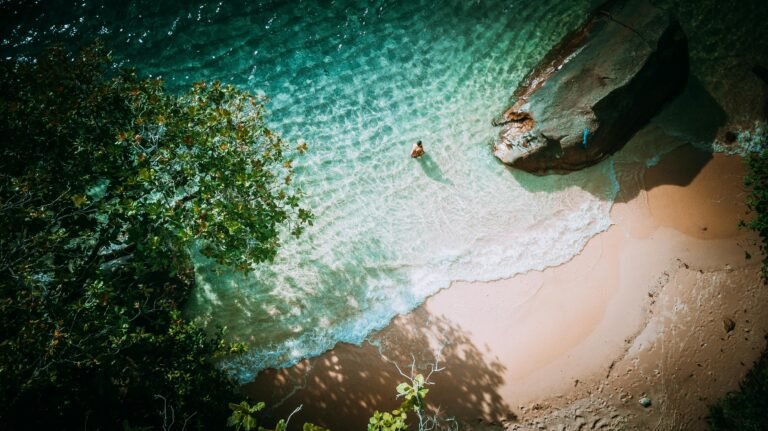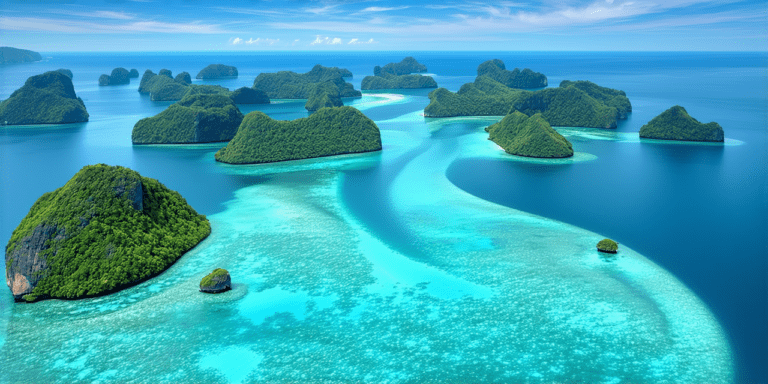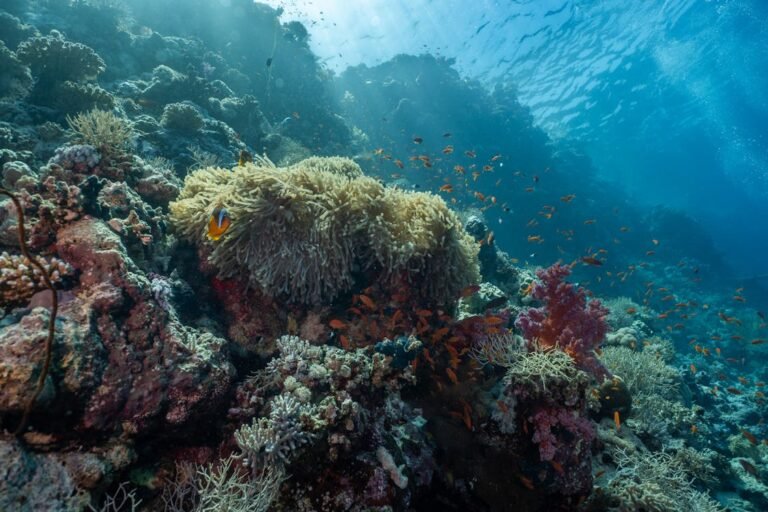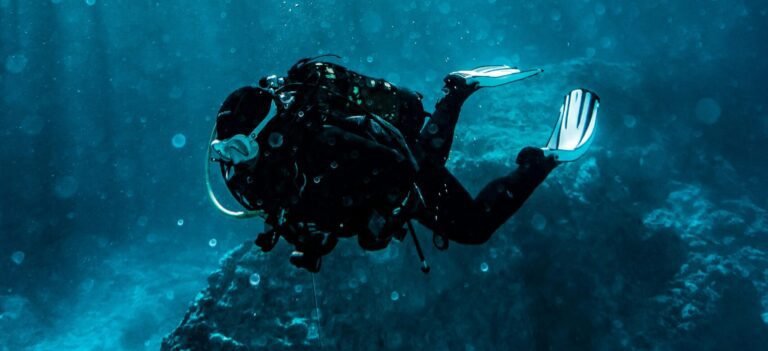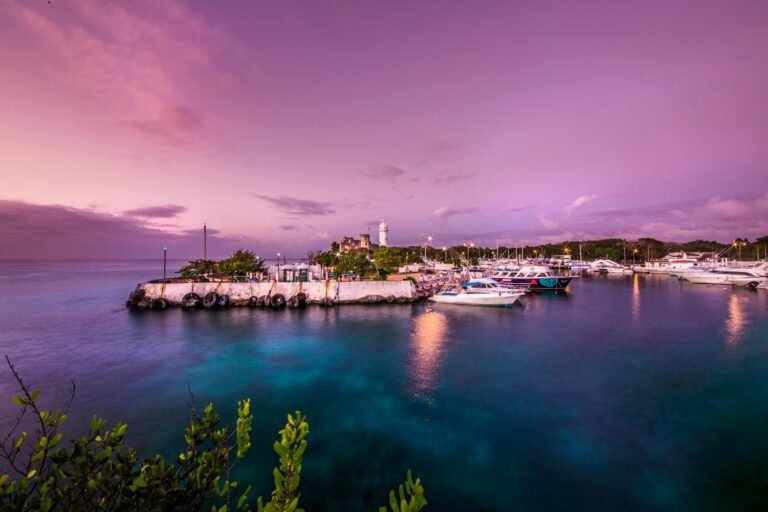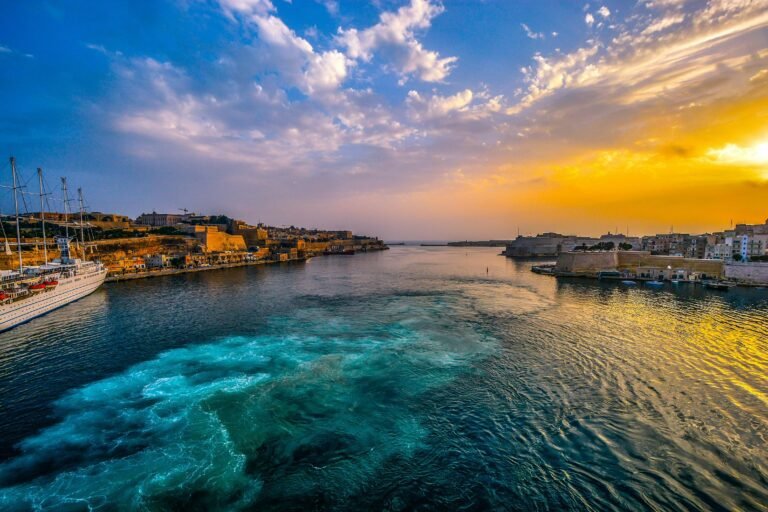The Best Dive Sites in the Galápagos Islands
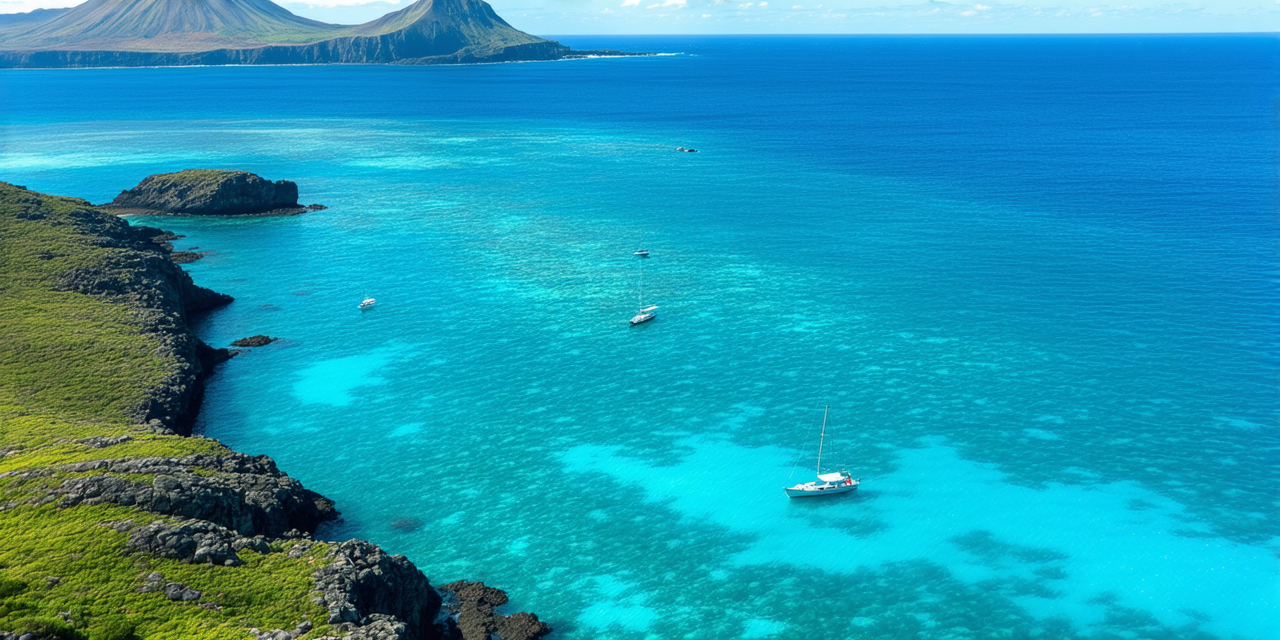
The Galápagos Islands are a dream destination for scuba divers who love wild, untouched places. For those looking to explore the best dive sites, Galápagos offers an unparalleled experience.
What makes it stand out isn’t just the incredible marine life. It’s the sense of being somewhere nature still dominates. Strong currents and volcanic underwater landscapes make it challenging but rewarding for those who respect its wildness.
In this guide, I’ll share the best dive sites in the Galápagos and practical tips to help you plan your trip. Whether you’re an experienced diver or just starting out, this place has something for anyone craving an underwater adventure.
Why Dive in the Galápagos?
Diving in the Galápagos isn’t just another trip—it’s an experience that stays with you. These waters are alive, dynamic, and teeming with life thanks to their unique location and pristine conditions.
Here’s why the Galápagos stands out as a top diving destination:
A Unique Ocean Crossroads
The Galápagos Islands are located at the meeting point of several powerful ocean currents, including the Humboldt and Cromwell currents.
These bring nutrient-rich waters, creating an underwater ecosystem that’s unmatched in diversity. It’s a perfect storm for marine life, from massive pelagic species to tiny reef creatures.
Iconic Marine Life Encounters
The Galápagos is home to species you’ll rarely find anywhere else, and diving here means close encounters with:
- Hammerhead Sharks: Often seen swimming in large schools.
- Whale Sharks: Migrating through these waters between June and November.
- Sea Lions and Penguins: Playful and curious creatures that often approach divers.
- Marine Iguanas: The only lizards on Earth that forage underwater.
It’s like diving in a wildlife documentary—every dive is full of surprises.
Year-Round Diving Opportunities
No matter when you visit, there’s always something special happening in the water.
- June–November (Dry Season): Cooler water temperatures attract whale sharks, hammerhead schools, and other large pelagic species.
- December–May (Warm Season): Warmer, calmer waters make for easier diving and vibrant coral life. Manta rays and reef fish are more active during this time.
A Protected Underwater World
As a UNESCO World Heritage Site, the Galápagos Islands have strict conservation rules. This ensures that the waters remain pristine and full of life for generations to come.
It’s one of the few places where you can dive and feel confident that what you’re experiencing is untouched and authentic.
The Galápagos offers not just a dive but a chance to connect with nature in its purest form. Every descent feels like an adventure, and every encounter is one to remember.
Top Dive Sites in the Galápagos
Darwin’s Arch (Darwin’s Towers)
Darwin’s Arch is one of the most exciting dive spots in the world, located near Darwin Island in the northern Galápagos. Known for big animals like hammerhead sharks and whale sharks, it’s a dream for experienced divers.
This site is remote and wild, only reachable by liveaboard boats. The strong currents and open-ocean setting make every dive here unforgettable.
(Note : on 17 May 2021 the arch collapsed due to natural erosion, leaving two pillars.)
Why Divers Love It
- Hammerhead Sharks: This is one of the best places on Earth to see large groups of hammerheads swimming together. Sometimes, you’ll see hundreds at once.
- Whale Sharks (Seasonal): From June to November, giant whale sharks pass through these waters. Watching one glide by is an experience you’ll never forget.
- Other Big Creatures: You might spot dolphins, silky sharks, Galápagos sharks, or even manta rays. Schools of tuna and other fish fill the water around you.
What to Expect
- Strong Currents: The currents here are powerful. Most dives involve drifting with the current or hooking onto the rocks to stay in place.
- Depth: Most dives are between 18 and 30 meters (60–100 feet), but the action happens in mid-water.
- Marine Life Everywhere: This isn’t a dive for relaxing or searching for critters—there’s constant action, with sharks, rays, and fish moving all around you.
Who Should Dive Here?
Darwin’s Arch is best for advanced divers. Strong currents and deep waters mean you need experience in similar conditions. If you’re comfortable with drift diving, this site will blow your mind.
Tips for Diving Darwin’s Arch
- Use a Reef Hook: Bring a reef hook to secure yourself to the rocks while watching the marine life.
- Prepare for Cooler Waters: Wear a thick wetsuit (5mm–7mm) with a hood. The currents can make the water feel colder.
- Book a Liveaboard: You can only access Darwin’s Arch on a liveaboard trip. Plan ahead, as these trips fill up fast.
Darwin’s Arch is a once-in-a-lifetime experience for divers who love big marine life and thrilling conditions. It’s not easy, but the rewards—hammerheads, whale sharks, and breathtaking underwater action—are worth every effort.
Wolf Island
Wolf Island is another world-famous dive site in the northern Galápagos. Known as the sister site to Darwin’s Arch, it offers incredible pelagic encounters and action-packed dives.
The nutrient-rich waters around Wolf Island attract countless marine species, making it a must-visit for advanced divers looking for unforgettable experiences. Just like Darwin’s Arch, this site is only accessible by liveaboard boats due to its remote location.
Why Divers Love It
- Hammerhead Sharks: Huge schools of hammerheads are a common sight, often swimming close to the surface in long, graceful lines.
- Eagle Rays and Mantas: Eagle rays glide effortlessly through the currents, and lucky divers might even spot a giant manta ray.
- Playful Dolphins: Dolphins often join divers during safety stops, adding a magical moment to your dive.
- Galápagos Sharks: These sleek predators patrol the area and are frequently seen on dives.
What to Expect
- Challenging Conditions: Strong currents and drift dives are the norm here. Divers must be comfortable moving with the current and staying aware of their surroundings.
- Depth Range: Most dives take place between 15 and 30 meters (50–100 feet). While the action is often mid-water, the dramatic volcanic formations add a stunning backdrop.
- Constant Action: Wolf Island is all about big animals and non-stop excitement. You’ll spend the dive watching sharks, rays, and schools of fish pass by.
Who Should Dive Here?
Wolf Island is perfect for advanced divers who are comfortable with strong currents and deep drift dives. While challenging, the rewards of diving here are unmatched.
Tips for Diving Wolf Island
- Bring a Reef Hook: You’ll need it to stay in place and enjoy the marine life without being swept away.
- Stay Streamlined: Keep your gear minimal and secure to reduce drag in the currents.
- Surface Safety: Always carry a surface marker buoy (SMB) to signal your location in case the currents separate you from the group.
Wolf Island offers some of the most thrilling dives you’ll ever experience, with hammerheads, rays, and sharks galore. It’s challenging but absolutely unforgettable—a true paradise for lovers of big marine life and raw underwater adventure.
Gordon Rocks
Gordon Rocks, located near Santa Cruz Island, is one of the most popular dive sites in the central Galápagos.
It’s famous for its strong currents and circular water movement, earning it the nickname “The Washing Machine.” Despite the challenging conditions, it’s a favorite spot for divers because of the chance to see schools of hammerhead sharks and other incredible marine life.
Unlike Darwin and Wolf, Gordon Rocks is accessible as a day trip, making it a great option for those not on a liveaboard.
Why Divers Love It
- Hammerhead Encounters: Gordon Rocks is one of the best places near Santa Cruz to spot hammerhead sharks. They often cruise in small groups or solo along the edges of the site.
- Turtles and Rays: Green sea turtles and eagle rays are commonly seen here, adding variety to your dive.
- Schooling Fish: You’ll also find large schools of barracuda, snapper, and king angelfish swirling around the rocky formations.
What to Expect
- Dramatic Underwater Landscape: The site features a submerged volcanic crater with steep walls and rocky formations. The currents funnel through this area, creating the “washing machine” effect.
- Currents: Expect strong currents and surges, especially when dropping into or ascending out of the site. Drift diving is common here.
- Depth Range: Most dives take place between 10 and 30 meters (30–100 feet), making it accessible but still requiring solid diving skills.
Who Should Dive Here?
Gordon Rocks is recommended for intermediate to advanced divers. The strong currents and surges can be tricky to handle, but divers with experience in challenging conditions will find it incredibly rewarding.
Tips for Diving Gordon Rocks
- Be Prepared for Currents: Practice proper buoyancy control and streamlining to handle the surges effectively.
- Choose the Right Time: Mornings often offer calmer conditions, so aim to dive early in the day.
- Stay Close to Your Guide: The currents can separate groups quickly. Stay within visual range of your dive guide for safety.
Gordon Rocks offers an exciting challenge for those ready to face strong currents. The hammerhead sightings, volcanic scenery, and rich marine biodiversity make it one of the top dive sites for thrill-seekers in the Galápagos.
Punta Vicente Roca
Punta Vicente Roca, located off the northwestern coast of Isabela Island, is one of the most fascinating dive sites in the Galápagos. It combines dramatic volcanic landscapes, cold nutrient-rich waters, and a wide variety of marine life.
Unlike other high-current sites in the Galápagos, Punta Vicente Roca is relatively calm, making it suitable for divers of all experience levels. This site offers a mix of wall diving, underwater caves, and incredible macro photography opportunities.
Why Divers Love It
- Volcanic Walls and Caves: The underwater terrain features steep walls and lava formations, offering a spectacular backdrop for your dive.
- Mola Mola (Sunfish): This is one of the best places in the Galápagos to spot these rare, giant, and oddly shaped fish.
- Playful Sea Lions: The resident sea lions are known to swim with divers, adding an extra layer of fun to your dive.
- Marine Iguanas: This is one of the few places where you might see marine iguanas feeding underwater.
- Macro Critters: Look closely for seahorses, frogfish, and nudibranchs in the cracks and crevices of the rocky walls.
What to Expect
- Diverse Conditions: While the waters here are calmer than sites like Gordon Rocks, the mix of cold and warm currents brings unique marine life to the area. The thermoclines can be surprising but manageable.
- Depth Range: Most dives are shallow, between 5 and 25 meters (15–80 feet), allowing plenty of bottom time to explore.
- Visibility: Visibility can vary but usually ranges from 10 to 20 meters (30–65 feet).
Who Should Dive Here?
Punta Vicente Roca is suitable for all skill levels. The calm conditions and shallower depths make it a great option for beginners, while the unique marine life and volcanic features keep it exciting for advanced divers.
Tips for Diving Punta Vicente Roca
- Bring a Camera: The combination of dramatic scenery and rare marine life makes this site ideal for photography.
- Stay Warm: The water here can be colder than other sites due to the thermoclines. A 5mm–7mm wetsuit with a hood is recommended.
- Look for the Small Stuff: While the big creatures grab attention, the walls are full of tiny, fascinating critters like seahorses and nudibranchs.
Punta Vicente Roca offers a completely different side of the Galápagos diving experience. With its volcanic scenery, unique wildlife, and calm waters, it’s a must-visit for divers looking to explore the quieter, colder corners of the archipelago.
Cousins Rock
Cousins Rock, located northeast of Santiago Island, is one of the most scenic and biodiverse dive sites in the Galápagos. Known for its dramatic volcanic formations and walls covered in soft coral, this site is a favorite among underwater photographers and marine life enthusiasts.
Its mix of small critters and pelagic species makes it a well-rounded diving experience for intermediate and advanced divers. This site is accessible via day trips, making it a convenient addition to your Galápagos diving itinerary.
Why Divers Love It
- Stunning Volcanic Landscape: The steep rock walls are adorned with colorful coral, sponges, and black coral trees, creating a vibrant underwater scene.
- Macro Photography Paradise: Seahorses, frogfish, and nudibranchs can be found tucked into the coral, offering endless opportunities for close-up shots.
- Eagle Rays and Sharks: Cousins Rock is also a great place to spot eagle rays gliding by or reef sharks cruising along the wall.
What to Expect
- Volcanic Wall Diving: The dive starts along a vertical wall that drops into the depths, covered in coral and teeming with life. The wall transitions to a sandy slope, where you’ll find garden eels and stingrays.
- Mild to Moderate Currents: While the currents aren’t as strong as at Gordon Rocks or Darwin’s Arch, you’ll still feel some water movement, especially along the wall.
- Depth Range: Most of the action is between 10 and 25 meters (30–80 feet), making it ideal for extended exploration.
Who Should Dive Here?
Cousins Rock is ideal for intermediate and advanced divers. The moderate currents and potential for deep dives make it slightly more challenging than beginner sites, but the rewards are well worth it.
Tips for Diving Cousins Rock
- Look for Camouflage: Frogfish and seahorses are easy to miss if you’re not paying attention. Move slowly and scan the coral carefully.
- Perfect for Photographers: Bring your macro lens to capture the vibrant small creatures and coral details.
- Be Current-Ready: Although mild compared to sites like Darwin, some currents can still challenge newer divers. Practice good buoyancy control to stay steady while photographing.
Cousins Rock is a true underwater treasure, offering a mix of stunning scenery, macro photography opportunities, and encounters with larger marine life. If you’re looking for a dive that’s as visually rewarding as it is exciting, Cousins Rock should be on your list.
Cabo Marshall
Cabo Marshall, located on the northeastern side of Isabela Island, is a dream destination for underwater photographers and anyone fascinated by large marine life.
Known for its clear waters and vibrant underwater landscapes, this dive site offers incredible encounters with giant manta rays and an abundance of reef fish. Cabo Marshall’s relatively calm conditions make it accessible to intermediate and advanced divers.
Why Divers Love It
- Giant Manta Rays: Cabo Marshall is one of the best places in the Galápagos to see these graceful giants up close. Watching them glide through the water is truly mesmerizing.
- Photographer’s Paradise: The combination of clear water, colorful reefs, and charismatic marine life makes this a hotspot for underwater photography.
- Diverse Marine Life: In addition to mantas, divers can encounter sharks, sea turtles, and schools of vibrant reef fish.
What to Expect
- Underwater Landscapes: Cabo Marshall features volcanic rocky slopes and coral gardens that create a striking contrast with the open blue waters.
- Visibility: The waters here are often crystal clear, with visibility ranging from 15 to 30 meters (50–100 feet), perfect for spotting pelagic species and capturing stunning photographs.
- Depth Range: Most dives take place between 10 and 25 meters (30–80 feet), allowing ample time for exploring.
Who Should Dive Here?
Cabo Marshall is suitable for intermediate and advanced divers. The calm conditions make it less challenging than sites like Darwin’s Arch or Wolf Island, but the currents and depths still require basic diving experience.
Tips for Diving Cabo Marshall
- Have Your Camera Ready: Manta rays are often curious and might circle you multiple times. A wide-angle lens is ideal for capturing their massive wingspans.
- Stay Alert in the Blue: Keep an eye on the open water for mantas, sharks, and other pelagic visitors.
- Time Your Trip: December to May is the warm season, which is ideal for spotting mantas and enjoying calmer waters.
Cabo Marshall offers an unforgettable combination of serene underwater landscapes and encounters with some of the ocean’s most elegant creatures. Whether you’re there for photography or simply to admire the beauty of the Galápagos, Cabo Marshall promises an incredible diving experience.
Marine Life Highlights in the Galápagos

The Galápagos Islands are a haven for marine life, with an incredible mix of species found nowhere else on Earth. Diving here means encountering everything from tiny critters to some of the ocean’s largest creatures.
Sharks: The Stars of the Show
The Galápagos is famous for its shark encounters. Here are some of the key species to look out for:
- Hammerhead Sharks: Schools of these unique, shovel-headed sharks are a common sight at sites like Darwin’s Arch and Gordon Rocks.
- Galápagos Sharks: Named after the islands, these sleek predators patrol the reefs and open waters.
- Whale Sharks: The largest fish in the sea, these gentle giants are seasonal visitors from June to November. Seeing one is a highlight of any dive trip.
Rays: Graceful and Elegant
From giant mantas to smaller eagle rays, the Galápagos is home to several species of rays:
- Giant Manta Rays: Frequently seen at sites like Cabo Marshall, these enormous rays are as graceful as they are mesmerizing.
- Eagle Rays: These spotted rays often glide in small groups, adding a touch of elegance to the dive.
- Stingrays: Found on sandy bottoms, stingrays are a common sight in calmer areas like Punta Vicente Roca.
Unique Marine Creatures
The Galápagos is home to species you won’t find anywhere else, adding a unique touch to every dive:
- Marine Iguanas: These remarkable reptiles are the only lizards in the world that swim and forage underwater. Watching them feed on algae is a rare and fascinating sight.
- Galápagos Penguins: The northernmost penguin species, they dart through the water like tiny torpedoes.
- Sea Lions: Playful and curious, sea lions often interact with divers, darting around in bursts of speed.
Reef Life: Vibrant and Diverse
The reefs of the Galápagos are teeming with fish and coral, creating colorful underwater landscapes.
- Tropical Fish: Schools of parrotfish, butterflyfish, angelfish, and snappers bring the reefs to life.
- Macro Life: Seahorses, frogfish, and nudibranchs are small but incredible finds for observant divers.
- Corals and Sponges: While not as abundant as in tropical regions, soft corals, gorgonians, and sponges decorate the walls and slopes.
Seasonal Highlights
The marine life in the Galápagos changes with the seasons, making every visit unique:
- June to November (Dry Season): Cooler water brings nutrient-rich currents, attracting whale sharks, hammerhead schools, and other pelagic species.
- December to May (Warm Season): Warmer, calmer waters are perfect for spotting manta rays, reef fish, and macro life. Visibility is often better during this period.
Best Time to Dive in the Galápagos

The Galápagos Islands are a year-round diving destination, but the best time to dive depends on what you want to see and the conditions you’re comfortable with.
The islands have two distinct seasons—the dry season (June to November) and the warm season (December to May)—each offering unique underwater experiences.
June to November: The Dry Season
This season is influenced by the cool Humboldt Current, bringing nutrient-rich waters that attract large pelagic species.
What to Expect
- Marine Life Highlights:
- Whale sharks are the main attraction during this time, especially at Darwin’s Arch and Wolf Island.
- Schools of hammerhead sharks are more active.
- Large groups of tuna, barracuda, and other pelagic species follow the nutrient flow.
- Conditions:
- Water temperatures range between 18–23°C (64–73°F).
- Visibility can vary, often between 10 and 20 meters (30–65 feet), due to the abundance of plankton.
- Currents are stronger, making dives more challenging but also more rewarding for those seeking action.
This is the best time for divers who love big animals and don’t mind cooler water and stronger currents.
December to May: The Warm Season
The warm season is influenced by the Panama Current, bringing calmer, warmer waters with better visibility.
What to Expect
- Marine Life Highlights:
- Giant manta rays are frequently seen, especially at sites like Cabo Marshall.
- Reef fish are more active, and corals appear more vibrant in the clear water.
- Sea turtles, marine iguanas, and playful sea lions are easier to spot during this period.
- Macro life, including seahorses and nudibranchs, is a photographer’s dream.
- Conditions:
- Water temperatures range between 24–28°C (75–82°F).
- Visibility improves, often up to 30 meters (100 feet) in calmer areas.
- Currents are milder, making this season more accessible to divers of all experience levels.
This is the ideal time for those who prefer calmer, warmer dives and the opportunity to explore reefs and macro life.
Which Season is Right for You?
| Season | Best For | Key Species | Conditions |
|---|---|---|---|
| Dry Season (Jun–Nov) | Big pelagic species like whale sharks | Hammerheads, whale sharks, tuna | Cooler water, stronger currents |
| Warm Season (Dec–May) | Vibrant reefs and macro life | Manta rays, reef fish, sea lions | Warmer water, calmer conditions |
General Tips for Timing Your Trip
- Liveaboard Availability: Plan your trip early, as liveaboard boats tend to book up quickly, especially during peak whale shark season.
- Personal Comfort: If you’re sensitive to cold water, the warm season may be more enjoyable. For thrill-seekers, the dry season offers more action.
- Dive Certification: Some sites, especially during the dry season, require advanced diving skills due to stronger currents. Make sure your experience matches the conditions.
No matter when you visit, the Galápagos will deliver incredible diving experiences. The choice between the dry and warm seasons ultimately depends on your preferences, but both offer a chance to explore one of the world’s most extraordinary underwater environments.
Tips for Diving the Galápagos

Diving in the Galápagos is an extraordinary experience, but it also comes with challenges.
Strong currents, colder water, and remote dive sites make preparation key to ensuring your trip is safe and enjoyable. Here are some practical tips to help you make the most of your Galápagos diving adventure.
Certification and Experience Requirements
The Galápagos isn’t the place for beginner divers, as many dive sites feature strong currents, drift dives, and deep waters.
- Recommended Certification: An Advanced Open Water certification is highly recommended. Some liveaboards may require it, especially for Darwin’s Arch and Wolf Island.
- Experience Level:
- Divers should have previous experience in similar conditions, including drift diving and managing strong currents.
- A minimum of 30–50 logged dives is a good baseline for feeling confident in the Galápagos.
Essential Gear for Galápagos Diving
The conditions in the Galápagos can be tough on divers and gear alike, so bringing the right equipment is crucial.
- Wetsuit:
- Water temperatures range from 18–28°C (64–82°F), depending on the season.
- A 5mm–7mm wetsuit with a hood is recommended for cooler months. Gloves are also useful for extra warmth and protection.
- Dive Computer:
- Many dives involve drift currents and varying depths, so a reliable dive computer is essential to track your profile.
- Surface Marker Buoy (SMB):
- With strong currents and open-ocean dives, an SMB is a must to signal your location during surface intervals or if you become separated from the group.
- Reef Hook:
- Strong currents at sites like Darwin’s Arch and Wolf Island require a reef hook to secure yourself and conserve air while observing marine life.
- Underwater Camera:
- The marine life and underwater landscapes are stunning. Bring a camera to capture the incredible moments, but keep it streamlined to avoid drag in the currents.
Choosing a Dive Operator
The operator you choose can make or break your Galápagos diving experience.
- Liveaboards vs. Day Trips:
- Liveaboards: These are the only way to access remote sites like Darwin’s Arch and Wolf Island. They’re best for experienced divers seeking the most iconic dive sites.
- Day Trips: Great for central sites like Gordon Rocks and Cousins Rock, especially if you’re staying on Santa Cruz Island.
- Group Size and Guides: Smaller groups with experienced dive guides ensure a safer and more personalized experience.
Conclusion
Diving in the Galápagos feels like stepping into a world frozen in time. From hammerhead sharks at Darwin’s Arch to colorful coral walls at Cousins Rock, every dive is an adventure you won’t forget.
The mix of dramatic underwater landscapes, thriving marine life, and challenging conditions makes it a one-of-a-kind experience.
Whether you’re chasing giant manta rays, swimming with sea lions, or hoping to spot a whale shark, the magic of the Galápagos is undeniable.
With the right planning, a good dive operator, and an adventurous mindset, you’ll see why this is one of the world’s top diving destinations.
This isn’t just about checking off a bucket list. It’s about connecting with nature at its rawest. If you’re ready to test your limits and explore life underwater, the Galápagos is waiting.

